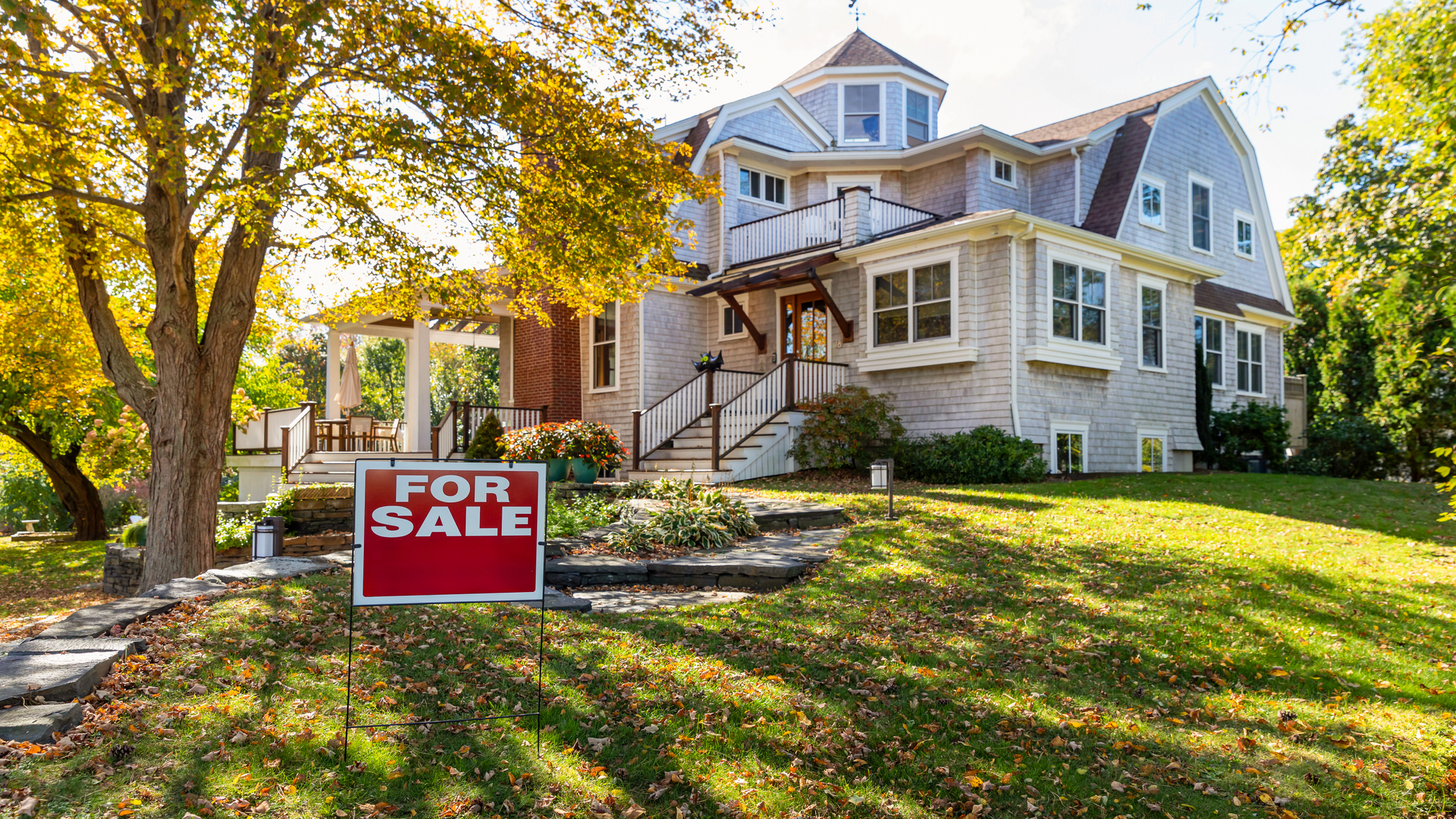Your Go-To Checklist for Selling a House
Use our house selling checklist to prepare, list and finalize your home sale.


Written by Shawnna Stiver on June 27, 2025
Reviewed by Megan Swindells, Edited by Alycia Lucio
Whether you’re listing with a real estate agent or considering selling on your own, use our home selling checklist to help you prepare. We break down the steps to take you from getting ready to sell your house to handing over the keys.
A checklist for each selling stage. Choose where to begin your journey.
Getting your house ready to sell
Before listing your home, set the right foundation. Use the steps below to prepare your home for a successful sale.
1. Find out what your home is worth
Understanding your home’s value can help you decide whether selling makes financial sense. While a Zestimate is not an official appraisal, it’s a starting point to determine how much your home is worth. Then do some research on recent sales in your area. Tools like the Zillow Market Heat Index can help you assess how competitive your market is. An experienced local agent may have a better grasp of what a reasonable list price should be for your home.
Once you have a good idea of your potential listing price, calculate your expected proceeds by factoring in all selling costs, including agent commissions, closing costs, and any outstanding mortgage balance. This will show you how much money you’ll potentially walk away with after the sale.
Action items:
2. Decide when to sell
Are you flexible on timing? Do you need to sell your house by a specific deadline? Timing can significantly impact how quickly your home sells and the final sale price. A flexible timeline may allow you to list during a peak buying season, like spring, so you can sell faster and for more money. Spend some time researching how long homes in your area typically stay on the market to help you plan your next move and set realistic expectations.
Action items:
3. Explore your selling options
Most sellers work with a real estate agent to help manage the complexities of selling, such as promoting the home, finding potential buyers, and finalizing the sale. A 2024 Zillow survey revealed 93% of sellers had some kind of agent use.
A good agent understands the local housing market and often can provide advice on pricing, valuable home improvements, and the best way to market your home to qualified buyers. When choosing an agent, look for someone with a strong track record in your area and interview multiple candidates to find the right fit.
For more experienced sellers, a DIY approach may be the right option or maybe a quick cash offer without the selling stress. You can explore all your selling options on Zillow.
Action items:
4. Make key repairs and improvements
Before listing your home, tackle any repairs that may help you sell your home for more. Sometimes a small change, such as touching up paint, can make a big impact on potential buyers when touring your home. According to Zillow’s 2024 Housing Trend Survey, 72% of sellers that made any improvements, interior painting (46%), bathroom updates (42%), and kitchen upgrades (38%) topped the list.
With your budget in mind, start with home improvements that offer the best return. This may be more expensive renovations to major systems, like plumbing, HVAC, electrical, and roofing, or lower-cost updates, like a fresh coat of paint or new lighting fixtures.
A pre-inspection could expose you to potential problems that you can resolve before listing your home. This gives you control over how issues are addressed, and prevents surprises that could derail your sale later.
Action items:
5. Clean, declutter, and stage
Preparing your home to sell involves more than just tidying up; it’s about creating an environment where potential buyers can envision themselves living in the house. A well prepared home has the potential to attract more interested buyers and increase your sale price.
Start by removing excess furniture and personal items like family photos, collections, and bold décor. The goal is to create a neutral canvas that allows buyers to imagine their own belongings in the space. Deep clean every room, including often-overlooked areas like closets, storage spaces, and baseboards.
Don’t forget about curb appeal. Your home’s exterior creates a critical first impression, and simple improvements like fresh landscaping, a clean entryway, and well-maintained outdoor spaces can significantly impact buyer interest.
Discuss the possibility of professional staging with your agent. While it requires an upfront investment, staging can help highlight your home’s best features and potentially lead to faster sales and higher offers. Some listing agents may even include home staging in their rate.
Action items:
Listing your house for sale
With your home prepped, it’s time to show buyers. These steps will help you create a strong listing and navigate early interest.
6. Set a strategic listing price
Ask your listing agent for a comparative market analysis (CMA). CMAs show the most recent sales of similar homes in the area and can be used to determine a competitive listing price for your home. If you’re not working with an agent, you can search public property records for real estate comps or explore recently sold homes on Zillow.
Your pricing strategy should account for current market conditions, your home’s condition, and your timeline. Price too high and you risk sitting on the market too long; price too low and you leave money on the table. The goal is to attract strong, qualified offers while meeting your financial needs.
Action items:
7. Build your listing and marketing plan
Before going live with your listing, have a clear conversation with your agent about your expectations and priorities. Discuss the minimum price you need to achieve your financial goals, deal-breaker contingencies, and whether you’ll need a rent-back agreement if you’re still coordinating your next home purchase. If you’re selling on your own, write out your must-haves and nice-to-haves, so you’re prepared for negotiations.
A strong listing and marketing strategy is essential to attracting qualified buyers, regardless of whether you’re working with an agent. This includes writing a compelling description that highlights your home’s best features, coordinating professional photography, and ensuring your listing appears across major real estate websites.
Professional visuals make a significant difference in attracting buyer interest. High-quality photos and virtual tours generate more online views and can lead to faster offers. According to a 2024 Zillow survey, 64% of sellers said that including a virtual tour in their home listing was extremely important. Most sellers said they were more likely to hire an agent who includes virtual tours (71%) and high resolution photography (78%) in their services. Even if you’re listing on your own, hiring a local photographer or videographer can be worth the investment.
If you are working with an agent, they may also promote your home through social media, email campaigns, and their professional network. For sellers going the DIY route, think about how you can expand your home’s exposure, whether through your own social media, community groups, or paid listing upgrades. The more eyes on your listing, the better your chances of finding the right buyer.
Action items:
8. Prepare for showings and open houses
Once your home is listed, you’ll need to accommodate showings and open houses to give buyers the opportunity to experience your property firsthand. If you’re working with an agent, establish showing protocols that balance accessibility for buyers with your schedule and privacy needs.
First impressions matter. Keep your property show-ready at all times by maintaining the cleanliness and staging you established during preparation. This means making beds, clearing countertops, ensuring good lighting, and keeping pets secured during showings.
Your agent will collect feedback from visiting buyers and their agents, which can provide valuable insights about your home’s appeal and potential concerns. This can help you make adjustments to improve your chances of receiving strong offers.
Action items:
9. Review offers and negotiate
When offers start coming in, it’s important to evaluate each one strategically and respond in a timely manner. Some sellers choose to review offers as they arrive, while others may set a deadline for all offers to be submitted, a strategy often used when multiple buyers are interested.
Not all offers are created equal. While price is important, you’ll also need to consider contingencies, financing terms, closing timeline, and any special requests like leaseback periods.
If you’re working with a real estate agent, they’ll guide you through each offer’s strengths and potential risks, helping you understand which terms are negotiable and which may be deal-breakers. They can also manage communications with buyers’ agents and ensure you’re responding within appropriate timeframes.
If you’re evaluating offers on your own, take time to carefully compare all terms, not just the dollar amount. Consider reaching out to a real estate attorney or trusted advisor if you’re unsure how certain contingencies or financing terms might affect your sale.
Cash offers often seem attractive because they eliminate financing contingencies, but they’re not automatically the best choice. A well-qualified buyer with financing might offer a higher price or better terms. Whether you’re working with an agent or going solo, the goal is to choose the offer that best meets your needs and has the highest likelihood of closing successfully.
Action items:
Finalizing the sale
Once you accept an offer, you’re in the home stretch. Here’s what to do to keep things on track before closing.
10. Navigate inspections and the appraisal
Once your offer is accepted, the buyer (or their agent) will typically schedule a home inspection within 7-10 days. You’ll need to make your home accessible during this time and plan to be out of the house while the inspector examines everything from the foundation to the roof.
Be prepared for the buyer to request repairs based on the inspection findings. Not every issue needs to be addressed, focus on safety concerns and major system problems, rather than minor cosmetic items. Your agent will help you determine which requests are reasonable and how to respond strategically.
The buyer’s lender will also order an appraisal to ensure the home’s value supports their loan amount. If the appraisal is lower than your agreed-upon price, you may need to renegotiate, or the buyer might need to bring additional cash to closing.
Action items:
11. Prepare for your move
Start planning your move as soon as you accept an offer — waiting until the last minute will only add stress to an already complex process. Begin by decluttering items you no longer need, and start packing non-essential belongings early.
Book your moving company or reserve a rental truck well in advance, especially during peak moving season in the summer. Get quotes from multiple companies and read reviews carefully.
Don’t forget to arrange time off work for moving day and any necessary utility transfers.
Handle the administrative tasks early, such as mail forwarding with the post office, transferring or canceling utilities, updating your address with banks and insurance companies, and researching schools or local amenities.
Action items:
12. Close the sale
The closing process typically takes 30-45 days from the time you accept an offer. During this period, you’ll need to coordinate with your agent, attorney, and title company to ensure all documents are prepared and requirements are met.
A few days before closing, review your settlement statement carefully with your agent. This document outlines all the financial details of your sale, including your net proceeds after paying off your mortgage, agent commissions, and other closing costs.
On closing day, bring a valid photo ID, house keys, garage door openers, and any other items specified in your contract. You’ll sign the final paperwork, officially transfer ownership, and receive your proceeds. This marks the end of your selling journey and the beginning of your next chapter.
Action items:
Selling your home successfully comes down to preparation, strategic pricing, and smart execution. With proper planning and the right support, you can achieve a successful sale that meets your financial goals and timeline. Remember to stay flexible during negotiations, and lean on your agent’s expertise to guide you through each step.
Ready for a new address?
Get an instant cash offer or list with a local partner agent.
Explore selling optionsRelated Articles
Sell your home with a winning strategy
Here’s how to maximize your home sale with the right selling plan.

Build a smart selling plan
Talk to your agent about their marketing approach - especially online - to ensure you’re getting the best possible price for your home.



